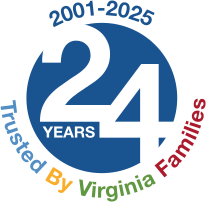Download the Caregiver Action Network's Free Medication Checklist Form
An up-to-date medication list is an important tool for the family caregiver and your care recipient’s doctor(s). People with chronic diseases or disabilities take more medications than any other group of patients. With the number of medications some patients take, the issue of medication management and can easily become overwhelming. Good health outcomes are three times less likely for patients who do not take medications correctly as compared to those that do. Improper use of medications causes millions of emergency room visits per year.
Maintain an up-to-date medication list
- Keep an up-to-date list of all the medications doctors have prescribed for your care recipient. Also, list over-the-counter medications and supplements. Be sure to list the name, dosage, and frequency of the medication, the reason for taking it, any dosing directions, the start date, and when appropriate, the end date.
- For prescription drugs, add the name and phone number of the prescribing doctor as well as the pharmacy that filled the prescription.
- Be sure to include your loved one’s name and your emergency contact information. Note any allergies or other significant medical information.
- Make multiple copies: one for you to carry; one for your care recipient’s patient file; one on the refrigerator for paramedics to find in an emergency; and one for the primary doctor.
- A simple computer-based document is one of the easiest ways to keep the record current.
“Translate” hand-written prescriptions
- Don’t be shy about asking all doctors to “translate” their handwriting, so you can have a record of what they prescribed and why
Write the condition treated on each medicine bottle
- You might find that your care recipient is taking three different pills for the same condition, each prescribed by a different physician. That may be exactly what is needed, but it is definitely a red flag to alert you to ask questions.
Use the same pharmacy when possible
- If you do, there will be an official record of all prescription medications over an extended period. This can be a vital timesaver during an emergency.
- Develop a strong rapport with your pharmacist and let him/her know you value their advice. The pharmacist is a great resource. Ask your pharmacist’s advice about over the counter medications and if they may react with prescription medications
Understand potential side effects and interactions and monitor interactions
- Ask the doctor and pharmacist about potential side effects and interactions with other drugs, vitamins, or foods.
- Learn what to do if a dose is accidentally skipped
Come up with an easy way for managing medications on a daily basis
- Use pillboxes or other technology to monitor and manage doses
- Use auto-refill programs – when available
What Should be on the Medication List?
- Name of drug – generic and brand names
- Dose
- Start and stop dates
- What the pill/capsule/liquid looks like
- A record of any side effects experienced
- What the drug is treating
- Instructions
- How and when to take the medication
- What not to do when taking the medication
- Over the Counter Medications and supplements with their doses
- Drug and other allergies
- Drugs to which you experienced a negative reaction (couldn’t tolerate it)
- Recently completed prescriptions
- Name/contact info of prescribers (physician/physician assistant/nurse practitioner, etc.)
- Name/contact info for pharmacy that filled the prescription(s)
Dispose of Unused Medications Safely
Option 1: Return unused medications in person - Some pharmacies, clinics or even hospitals may accept unused medications. You can check for a facility at www.disposemymeds.org. Some (but not all) police departments or fire stations will accept unused medication on National Prescription Take Back Day, on October 27.
Option 2: Return unused medication by mail - Many pharmacies sell postage-paid special envelopes for you to return unused medications to a safe disposal facility
Option 3: Look for a disposal kiosk - Many pharmacies have secure kiosks where you can safely deposit unused medications. Remove personal information, and drop unused medications in the slot!
Option 4: Neutralize them! - Purchase specialty charcoal-activated medication disposal bags. After placing the medications in the bag, add water and seal. The drugs will be rendered inert and inactive - including opioids. These bags can then be placed safely in the trash and you can have peace of mind knowing that the drugs will not enter the water supply or be easily abused or diverted.
NOTE: Most medications should not be flushed, but there are a small number that should be. Check with the pharmacist to find out if medications should or should not be flushed. Be extremely cautious if you choose to place unused medications in the trash. Children, pets and those addicted to opioids can fish medications out of the trash, even if combined with coffee grounds or kitty litter.
Reprinted with permission from Caregiver Action Network, the nation's leading organization for all family caregivers.
